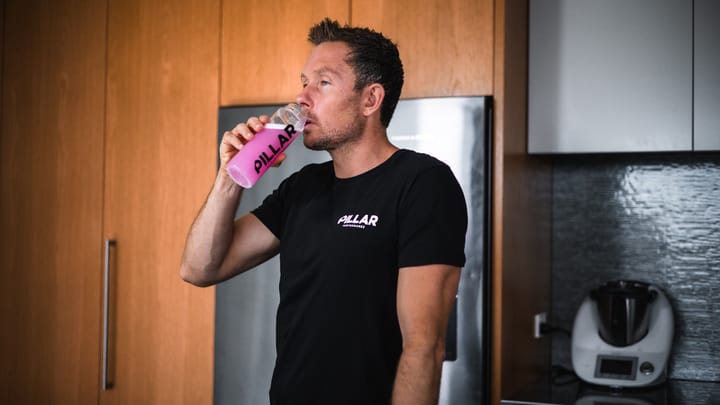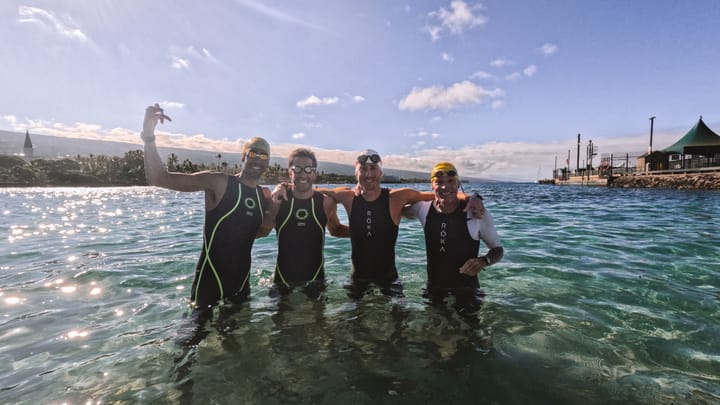Beginner’s Guide to the Bike Leg
New triathletes should focus on effective bike training that transcends mere kilometre counting. Dive into this guide to harness the technical, physiological, and strategic aspects of the bike leg journey.

New to triathlon? Check out the beginner’s guide to the bike leg.
If you’re thinking about getting into triathlon, then you need to get on your bike. For most of us, that’s not a problem since bike-training sessions are generally deemed the most enjoyable, and often the most sociable, sessions to undertake.
A few hours on the weekend winding through the hills on your bike with your mates can be great fun. So, the problem with bike training usually isn’t getting it done, it’s more likely that it’s a disproportional amount of time spent completing kilometres that are not as effective as they could be, in terms of the training effect.
Like any other aspect of preparing for your first triathlon, training for the bike leg involves training effectively and recognising that the bike leg involves a special set of considerations that are unique to the sport – and involve more than just knocking out kilometres. An essential part of performing well on the bike leg, and ultimately on the run, is to incorporate the interrelated aspects of the race into your training.
The basic skill set
Before we go further, there is an essential set of riding competency skills that you need to progress safely in your training. For example, you are going to need to be confident at riding in a bunch – and that means knowing how to ride straight, signal hazards, corner, brake, descend and understand a group’s rules. These skills are best taught and explained by a coach, or the head of your riding group. Once you have mastered the basic skill set, it’s time to progress your performance.
Develop the engine first and then work on the chassis
I have seen a lot of age group athletes on bikes geared up with the works – deep dish carbon wheels, aero helmets, power meters, aero bottle cages, electronic shifters, complex hydration systems and the like. The allure of the bike leg can be to invest in equipment – to effectively ‘buy’ speed – and there’s plenty of equipment to think about. For me, though, it comes down to this: invest in developing the engine (you) first then invest in the chassis (the other bits) later. For new triathletes, this means investing in the essential minimum set of training tools; a road bike (alloy is fine) that fits you, clip-in pedals, an indoor trainer, and a GPS bike computer. Aside from the gear you’ll train in, that’s all you’ll need. This set of training tools, with the correct training structure, will be enough for you to prepare for and race well at your next event. There will be plenty of time to invest in fast gear when you’re up to speed. To set a correct structure we need to have a closer look at the demands of the bike leg.
Understanding the demands of the bike leg
When training for the bike leg, athletes often forgo the structured training they employ in their run and swim training and instead focus on parameters like average speed, distance covered (irrespective of how), and duration (again, irrespective of how). I have heard plenty of talented triathletes explain how they have a solid 120 kilometres to knock out, with no other objective, and then complete that in two or three segments with coffee stops between. In other words, they’re counting the kilometres between coffee stops.
The bike leg doesn’t involve coffee stops.
The bike leg starts on the mount line and ends on the dismount line. Between those lines there is at least one acceleration component, a straight-line constant speed component, one or more cornering/turning components and a deceleration component. In addition to these, there are also external factors such as road surface and weather considerations, all of which need to be prepared for. Some races also involve additional considerations such as hill elements, traffic issues, and congestion/drafting issues.
The four ‘als’
Just like training for every other leg, structured, objective-orientated training on the bike is more likely to deliver increased performance gains. As a starting point, adopt a training approach that exceeds the demands you are likely to encounter on race day. These demands will vary according to the type of event (sprint distance, Olympic distance, etc), the course, and the conditions. Each of these demands are key input considerations and ultimately the four ‘als’ that will govern your race day performance – technical, physiological, nutritional and mental.
Getting technical
There are a number of technical aspects that can provide significant performance improvements, and shave time off our race result, with little training investment. Most notably these are: mastering mounting the bike, pedalling efficiency, acceleration skills, and cornering skills. Surprisingly, in a sprint distance event at an average speed of 35km p/h, taking 30 seconds to mount your bike means a loss of about 200 metres over an athlete who takes 10 seconds. This equates to an average speed differential of about 0.5kmph that you’ll need to make up on your quick-mounting mate. Improving mounting skills so that the transition onto the bike is seamless and does not involve stopping is the easiest way to gain an immediate front-end performance improvement. Have a coach show you how to mount on the bike or head down to your local footy oval and practise jumping on your bike on a grass surface.
Keep going round in circles
In terms of pedalling efficiency, the principle underlying straight-line speed on a bike is pretty straightforward. It involves the simultaneous and continuous application of opposing forces to each pedal spindle throughout the entire pedal cycle. The mechanism for applying these opposing forces is your legs and your core, via the linkages provided by your shoes, cleats and pedals.
Working on improving pedalling efficiency and other technical aspects (such as cornering, accelerating) is often overlooked, even though time savings are there for the taking. Single-leg drills on an indoor trainer are a great way to develop an improved pedalling action. As a starting point, try incorporating up and down reps of 30 seconds left leg only, 30 seconds both legs, 30 seconds right leg after an eight-minute warm-up holding a cadence in the range of 90rpm to 100rpm. Start with three x four-minute single leg drills with each rep followed by two minutes with both legs best work. Focus on commencing the up cycle by pulling your knee towards your chest, pushing the toes forward across the top of the cycle, commencing the downstroke with the ankle, and pulling your heel towards the rear wheel across the bottom of the stroke.
Firing up the engine
I like to keep things pretty simple when it comes to preparing an athlete for the physiological demands of a race. A typical preparatory phase would involve six-to-seven week blocks of hill riding incorporating gradual progression in total elevation and/or duration (for strength development), a speed endurance development block including rides that combine hill work, and faster rides on the flats (say, 50 percent hills and 50 percent fast flats), and a block of pure speed work. This might involve criterium/velodrome-type sets and race simulation sets. So, preparing for a sprint or Olympic-distance event might involve a structure of about 22-to-24 weeks. To give you an idea, a general framework for a 22-week preparatory phase for an Olympic distance event might look like this:
Weeks 1-to-4: Transition to training
- Two rides per week, incorporating a long ride building to 70 kilometres per week
- One skills session per week (e.g. mounting bike, cornering and turning skills, bunch riding skills)
Weeks 5-to-8: Hill progression
- Two rides per week in the hills building to 70-to-80 kilometres per ride, adding 10 percent total elevation per week
- One indoor interval set per week
Weeks 9-to-12: Speed, endurance and mental toughness
- One ride per week in the hills – 50 kilometres plus per ride
- One ride per week ‘50:50’ starting with 50 percent hard hills and 50 percent time trial type effort in weeks 9 and 10 building to race distance, then reverse in weeks 16-to-18
- One combined ergo and track run per fortnight (e.g. 3 x 6m00 on the ergo with 1200m to 1600m runoffs)
Weeks 13-to-16: Speed
- One 50-kilometre tempo ride per week
- One speed set per week
- One race simulation set with a run off the bike
Race preparation sets – mental toughness and confidence
Race preparation sets are an essential part of preparing for your event. They allow you to rehearse a nutrition strategy, devise a pacing strategy, develop an understanding of the interrelationship between bike effort and run performance and develop confidence in your skill execution. With my squad, I like to conduct race simulation sessions about five weeks out from the event on a course that replicates aspects of the racecourse. This includes a run off the bike element. These sets give us the opportunity to experiment with nutrition and pacing strategies, introduce a competitive element through the use of handicap starts, and experiment with different pacing strategies for run off the bike. We do this in full race set-up, on a course that replicates the characteristics of the one we will race on. The great thing about some of the online mapping tools is that we can easily analyse the characteristics of any course anywhere in the world, and then plan routes that replicate it to the maximum extent possible.
Race day
Adopting a training approach that involves training for, and rehearsing, all aspects of bike performance will mean that, come race day, there should be no surprises. Not only that, your investment in building your engine and skill development means you won’t have a lot of time to admire some very flash looking bikes as you rip past them – but you’re entitled to have a chuckle to yourself.





Comments ()